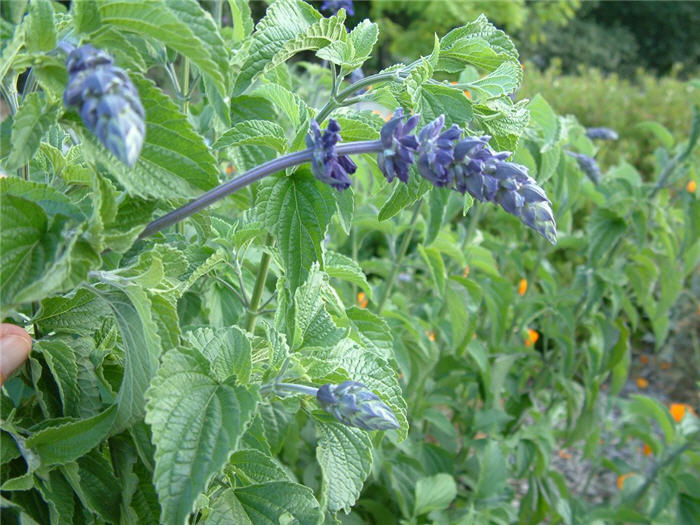| Botanical Name: Salvia azurea grandiflora | |
| Common Name: Blue Sage, Pitcher Sage |

-
Anatomy
-
Culture
-
Design
Plant Type
Perennial
Height Range
3-6'
Flower Color
Blue, White
Flower Season
Summer, Fall
Leaf Color
Green
Bark Color
n/a
Fruit Color
n/a
Fruit Season
n/a
Sun
Full
Water
Low, Extra in Summer
Growth Rate
Moderate
Soil Type
Sandy, Clay, Loam
Soil Condition
Average, Poor, Well-drained, Dry
Soil pH
Neutral, Basic
Adverse Factors
Attracts Bees
Design Styles
English Cottage, Meadow, Mediterranean, Ranch, Spanish, Native Garden
Accenting Features
Showy Flowers, Specimen
Seasonal Interest
Summer, Fall
Location Uses
Perennial Border, Foundation, Patio
Special Uses
Cut Flowers, Naturalizing
Attracts Wildlife
Butterflies
Information by: Stephanie Duer
Photographer:
Photographer:
-
Description
-
Notes
This prairie perennial may be the tallest salvia around, at 2 to 5 feet tall (and even taller). It is unbranched, or with a few small stems near the flower. The leaves are greyish green, narrowly lanceolate, with serrated margins toward their tips, and 3 to 5 inches long. The foliage exudes a sage scent and has a sage taste. The flowers grow in whorls along the last foot or so of stem, and are light blue. Flowers in late summer and early fall. Enjoyed by bees, butterflies, and moths. There is currently one planted in the Washington Square Garden.
Prefers dry soils and full sun; too much water, too much fertilizer, or too much loamy-goodness will result in an even taller salvia but with less flowering. It tolerates high alkaline soils. Cut back hard in late winter.